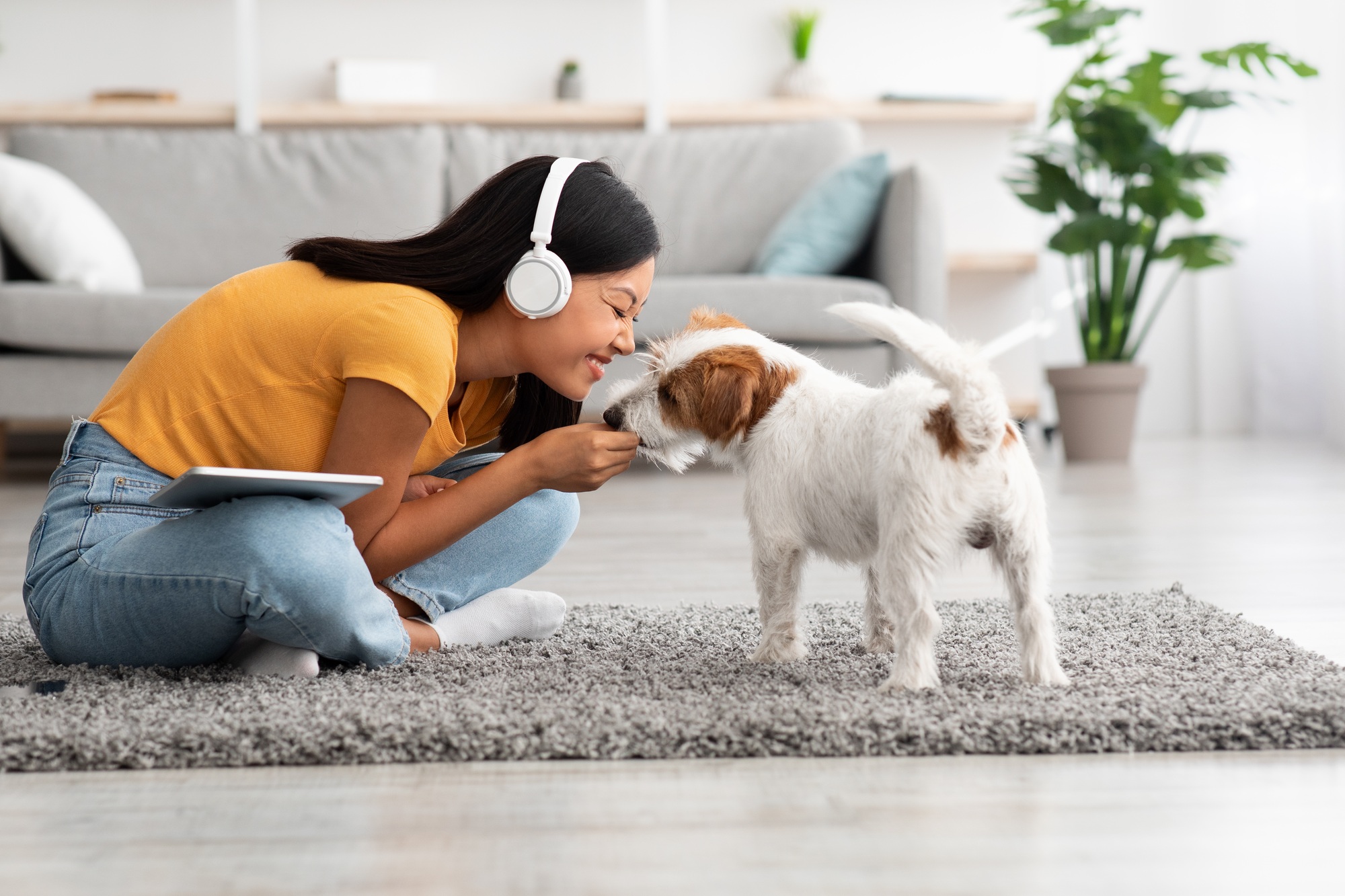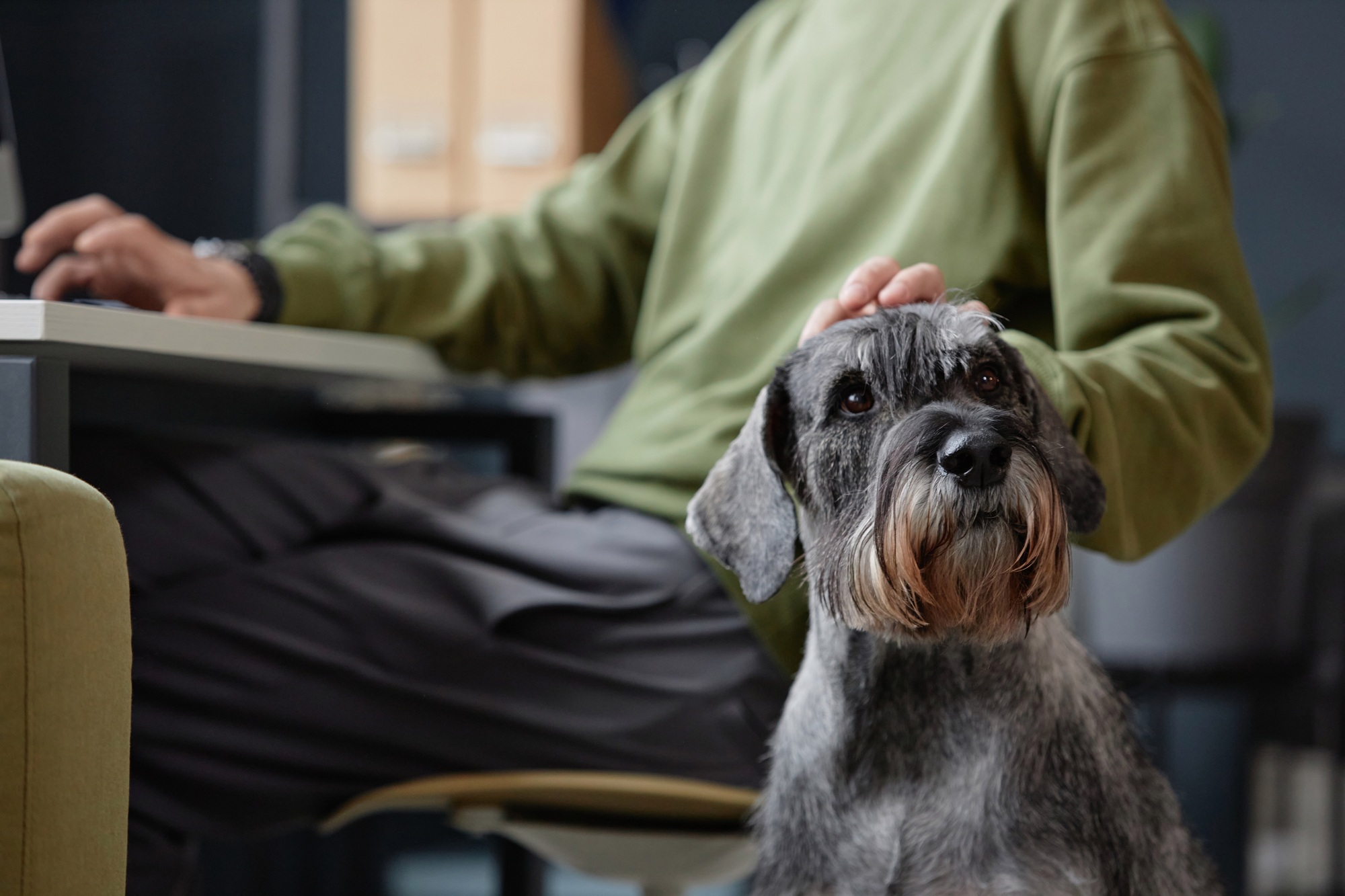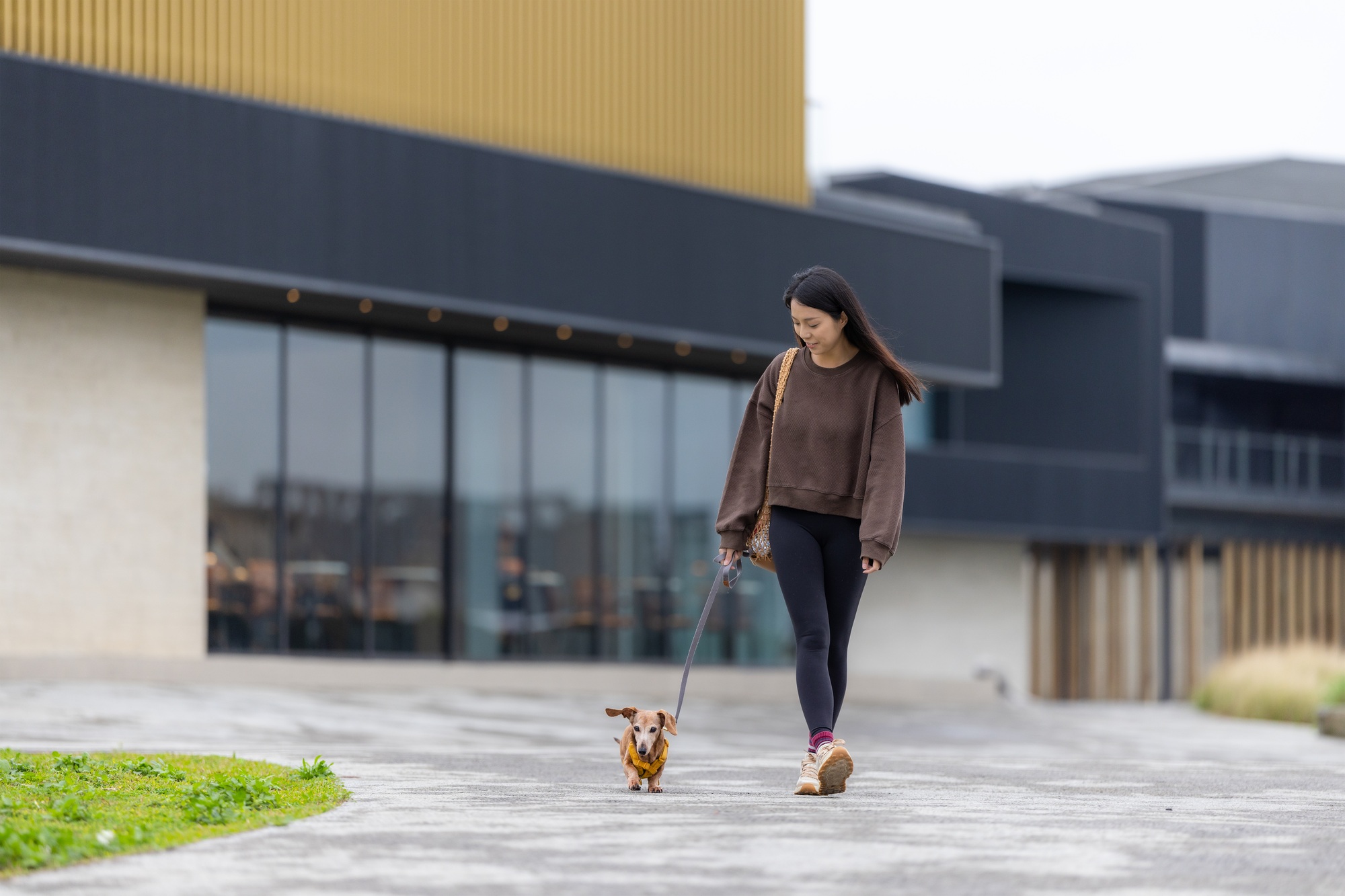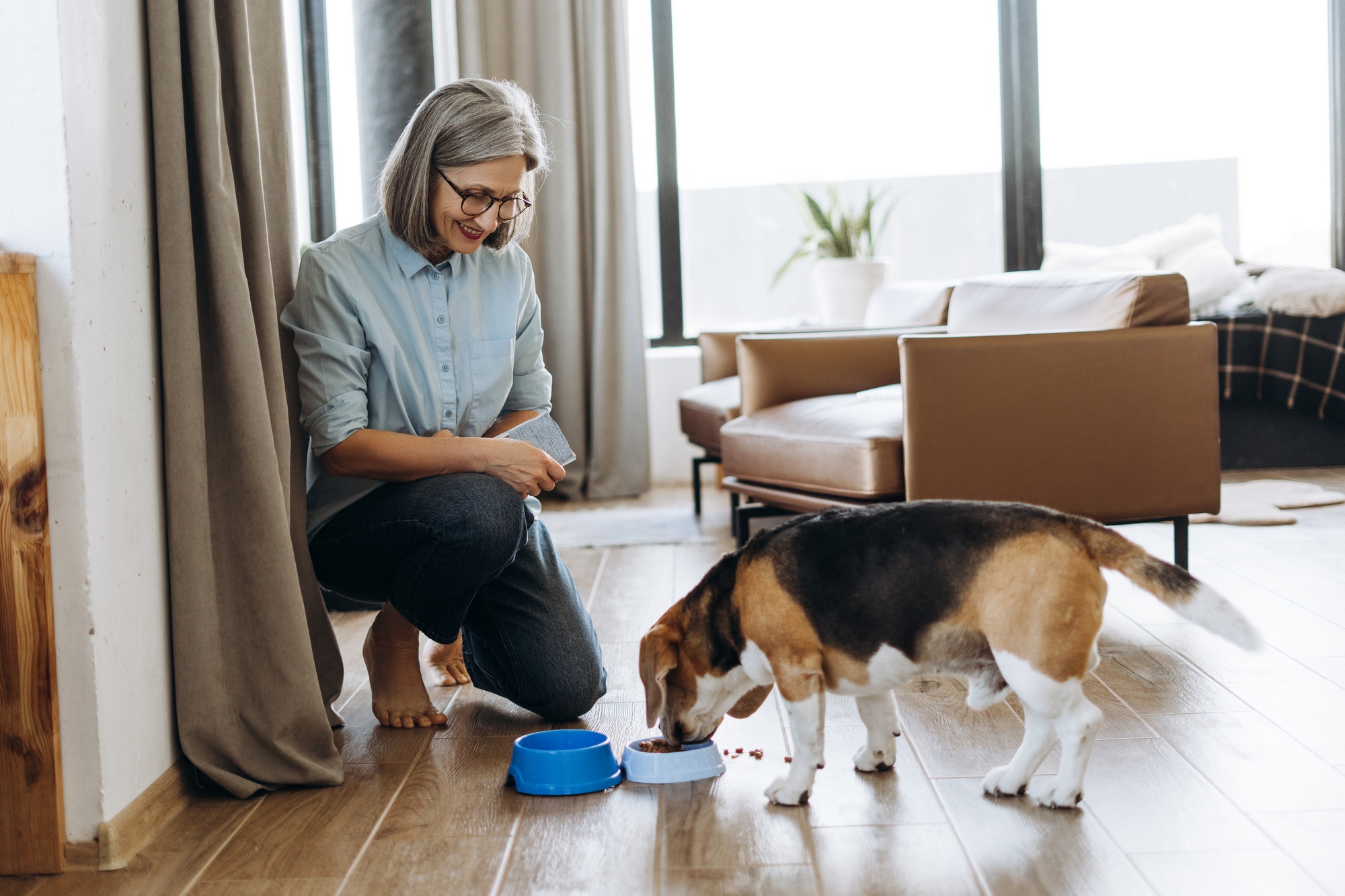
A good night’s sleep is just as essential for your dog as it is for you. Whether your dog is a playful puppy or an older, more relaxed companion, sleep plays a vital role in their physical and mental well-being. Dogs, like humans, need a comfortable, quiet, and safe space to rest, recharge, and stay healthy.
Creating the ideal sleeping environment for your dog not only ensures they get enough rest but also contributes to their overall health and happiness. In this article, we’ll explore the key elements to consider when setting up a comfortable sleep space for your dog.
1. Choosing the Right Bed for Your Dog
1.1 The Importance of a Supportive Bed
One of the most crucial aspects of a dog’s sleep environment is the bed they rest on. Just as we need a mattress that supports our body, your dog needs a bed that provides comfort and proper support. The right bed can help alleviate pressure on joints and bones, especially for older dogs or those with arthritis.
A bed that is too soft may not provide adequate support, while a bed that is too firm may be uncomfortable. Look for orthopedic dog beds made from memory foam or other supportive materials. These beds help distribute weight evenly, relieving pressure points and promoting restful sleep.
1.2 Choosing the Right Size
Another important factor in selecting a bed is size. The bed should be large enough for your dog to stretch out comfortably but not so large that they feel lost in it. Ideally, a dog should be able to lie down and curl up in a natural position without feeling cramped or restricted. Measure your dog from nose to tail and choose a bed that gives them enough space to stretch out fully.
For smaller dogs, a cushioned bed with raised edges may help them feel secure, while larger dogs may benefit from a more spacious mattress-style bed. Additionally, consider your dog’s preferred sleeping positions—some dogs like to curl up, while others sleep stretched out.
2. Create a Quiet and Calm Sleeping Space
2.1 The Importance of a Quiet Area
Dogs are sensitive to noise, and loud sounds can disrupt their sleep. It’s essential to provide a quiet, peaceful environment where your dog can rest without distractions. If possible, place their bed in a calm area of the house, away from heavy traffic, loud noises, or areas where people and other pets are constantly moving around.
Having a designated sleep area can help your dog associate the space with rest and relaxation. If your dog is particularly sensitive to noise, you can try soundproofing the area with heavy curtains, rugs, or a white noise machine to mask outside sounds.
2.2 Avoiding Disruptions During Sleep Time
Once you’ve created a quiet space for your dog to sleep, it’s essential to minimize disruptions during their rest time. Avoid waking them up unnecessarily or engaging in loud activities near their bed. This will help them establish a consistent sleep routine and allow them to get the deep, restorative rest they need.
Dogs benefit from a regular sleep schedule, so try to maintain consistent sleeping and waking times. Establishing a bedtime routine, such as a calm walk or some quiet playtime, can help signal to your dog that it’s time to wind down.
3. Temperature Control for Comfortable Sleep
3.1 Keeping the Room at the Right Temperature
Temperature plays a significant role in how well your dog sleeps. Dogs have a different tolerance to heat and cold than humans, so it’s important to maintain a comfortable temperature in their sleep area. Dogs with thicker coats, such as Huskies or Golden Retrievers, may prefer cooler environments, while short-haired dogs, such as Chihuahuas or Greyhounds, may need a bit more warmth.
Aim for a room temperature of around 65-70°F (18-21°C) for optimal comfort. In warmer months, ensure that your dog has access to cool, shaded areas, and in colder months, provide extra warmth through blankets or heating pads. Always monitor your dog’s comfort levels and adjust accordingly.
3.2 Bedding for Temperature Regulation
In addition to adjusting the room temperature, consider the type of bedding you provide. Cooling mats can help regulate your dog’s temperature during hot weather, while thicker, insulated beds or blankets can help keep them warm during colder months.
Ensure that your dog has the option to adjust their sleeping arrangement based on their needs. Some dogs prefer to curl up in warm blankets, while others enjoy spreading out on a cool surface. A versatile bed with removable covers and a variety of layers can help your dog adjust to changing temperatures.
4. A Safe and Secure Sleeping Environment
4.1 Reducing Anxiety with a Secure Space
Just as we feel more comfortable in our own space, dogs also need a safe and secure environment to rest. A dog who feels anxious or stressed may have difficulty sleeping. Providing a designated, safe area can help reduce anxiety and promote better sleep.
Consider using a crate, playpen, or a quiet corner in your home as a designated sleeping area. This not only provides a sense of security but also helps establish boundaries. For dogs prone to separation anxiety, creating a comfortable space where they feel safe and secure is essential for promoting restful sleep.
4.2 Comforting Your Dog with Familiar Items
To make the sleep space more inviting, add comforting items that make your dog feel at ease. Familiar smells, such as their favorite blanket, a worn T-shirt of yours, or a toy, can provide comfort and reduce anxiety. These items can help your dog associate their sleeping area with relaxation and security.
For anxious dogs, calming products like pheromone diffusers or calming music can further help them relax and sleep soundly. Consistency in their sleep environment can also help create a positive association with bedtime.
5. Maintaining Cleanliness in the Sleep Area
5.1 Regular Cleaning for Health and Hygiene
Just like humans, dogs need a clean environment to sleep in. Regular cleaning of their bed, blankets, and surrounding area is essential for preventing the buildup of dirt, bacteria, and allergens that can negatively affect their health. Wash their bedding regularly, and vacuum the area around their bed to keep it free from dust and pet hair.
A clean, comfortable space will not only help your dog sleep better but also contribute to their overall health. Regular grooming and bathing will also help reduce the amount of shedding in their sleep area, making it more comfortable for your dog.
5.2 Checking for Pests and Allergens
Dogs are susceptible to pests such as fleas, ticks, and mites, which can cause itching, discomfort, and poor sleep. Regularly check your dog’s bed and surrounding area for any signs of pests. Consider using natural pest-repellent sprays or flea treatments to prevent infestations.
Additionally, if your dog has allergies, be mindful of the materials in their bedding. Hypoallergenic fabrics or covers can help reduce irritation and promote better sleep, particularly for dogs prone to skin sensitivities.
Conclusion
Creating the perfect sleeping environment for your dog is essential for their physical and mental well-being. By providing a comfortable bed, a quiet and secure space, and maintaining the right temperature, you can ensure your dog gets the restful sleep they need to stay healthy and happy. A well-rested dog is not only more energetic and productive but also more emotionally balanced, contributing to a stronger bond between you and your furry companion.
















